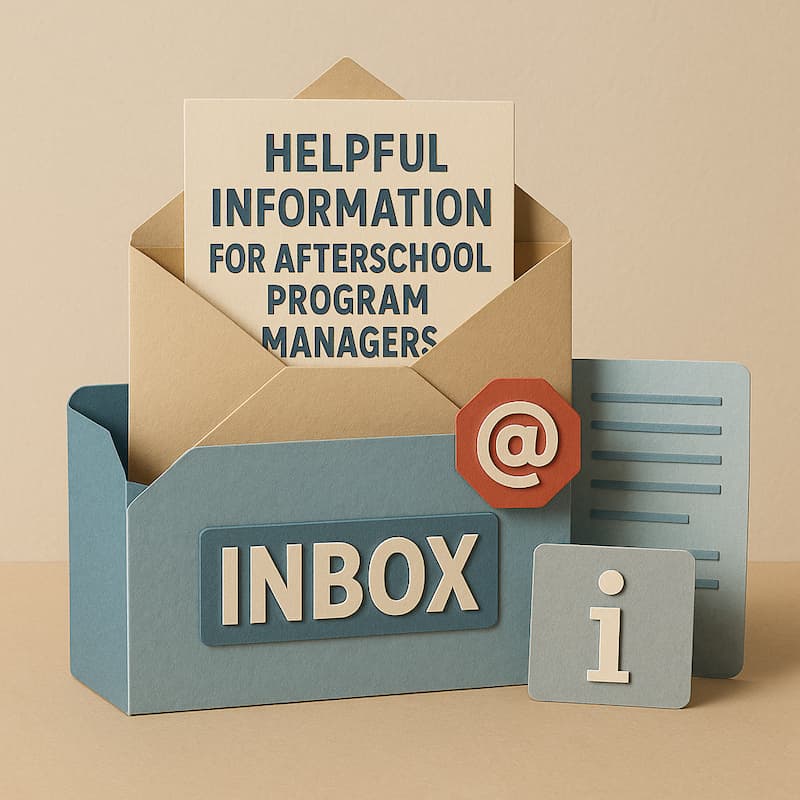
ELO Program Essentials: A Guide for Overwhelmed Site Coordinators
Managing an ELO (Expanded Learning Opportunities) Program is both just another item on your vast to-do list and it’s also a full-time commitment that adds layers of complexity to your already demanding role. As a Site Coordinator, beyond just managing logistics you're ensuring student safety, supporting staff, and acting as a vital link between the school and the community. It's a challenging role, and it's easy to feel overwhelmed by the sheer volume of tasks that need your attention.
But you're not alone in this. We understand the pressure you're under, and we're here to help you streamline your processes, improve communication, and ultimately make your job a little easier. Let's dive into some key areas that can help you better manage your ELO program and, more importantly, make a positive impact on your students' learning experiences.
Understanding the Core Components of a Successful ELO Program
At its heart, an ELO program is designed to provide students with opportunities that extend beyond the traditional school day. These programs are crucial for offering academic support, enrichment, and social-emotional development, especially for students who may need extra help or more personalized learning experiences. But more than that, ELO programs address gaps where students may be lacking, offering a unique opportunity to bridge those deficiencies.
Let's look at some essential components that contribute to the success of your ELO program:
- Engaging Curriculum: Ideally, your program should offer a curriculum that aligns with students' interests and needs. Incorporate hands-on activities, foster project-based learning opportunities, and include creative endeavors relevant to both the students and your community. These elements are essential for keeping students engaged and excited to participate in your school program.
- Qualified and Committed Staff: The success of your program relies heavily on your staff and is influenced by their dedication and expertise. Advocate for and encourage opportunities for them to have the training and resources they need to deliver high-quality programs. This becomes even more critical when working with special education students or English language learners, where specialized skills are necessary.
- Strong Partnerships: Building relationships with community-based organizations and stakeholders can provide additional resources, support, and opportunities for your students. Each community is different, so take advantage of the unique elements that make up yours and partner with local groups that align with your goals. For example, you might partner with a local library to offer extended learning opportunities or work with a community center to provide after-school enrichment activities and learning programs.
However, even with these components in place, Site Coordinators like you still face many challenges. Tight budgets and staff resources, a high volume of administrative tasks, and the need to meet the diverse needs of your students can make your job feel overwhelming. That's why it's essential to focus on streamlining where you can.
Streamlining Attendance Tracking and Reporting
Accurate attendance tracking is vital for securing ELO program funding, maintaining compliance with Title IX and California Education Code Section regulations, and evaluating the effectiveness of your program. While it would be ideal if this were as simple as checking a box next to a student's name, the reality is that a comprehensive system is often required to collect and manage attendance data effectively. Paper-based systems, though long-standing, are typically inefficient and prone to errors.
Here are a few practical tips to simplify your attendance procedures:
- Visual Check-In Systems: Consider using a whiteboard or chart with student names and designated slots for arrival and departure times. This can make the process more transparent and less prone to mistakes. Consider capturing this board with a camera each day to have an additional backup of the data.
- Designated Responsibilities: Assign specific staff members to consistently oversee the sign-in/sign-out process. Make sure they have the support they need so they can focus purely on managing the transitions. This ensures consistency and accountability, while also creating a sense of familiarity and order during transition times.
- Leverage Technology: This is where a platform like Attendly can make a significant difference. Attendly’s mobile app allows staff to quickly record attendance using a tablet or smartphone, eliminating the need for paper-based systems and significantly reducing the risk of errors. Plus, Attendly’s automated reporting features make it easy to generate accurate reports when you need them—whether it's for program information, an ELO P program plan, or attendance records—without having to spend time collating, searching for, or compiling data.
By streamlining your attendance process, you can reduce the administrative burden and focus on what really matters—creating a positive and enriching experience for your students.
Effective Communication Strategies for Parents and Guardians
For any school program to be successful, it’s important to have clear and consistent communication patterns between the school and the parents. Parents want to know that their children are safe, engaged, and benefiting from the program. But with language barriers, diverse communication preferences, and busy schedules, keeping everyone in the loop can be challenging.
Here’s how you can improve communication with parents:
- Build Relationships: It starts with trust. While it seems basic, regularly greeting parents by their name helps demonstrate that everything is in control and their children will be well cared for. Designate a time and place - that isn’t drop-off or pick-up - to listen to their concerns. This allows them to express worries or needs without slowing down critical transition times. When possible, aim to regularly provide updates on their child’s progress. These small gestures can go a long way in building rapport.
- Utilize Diverse Channels: Not all parents prefer the same communication methods. Some may respond well to emails, while others prefer text messages or phone calls. Platforms like Attendly can help by offering built-in communication features—including automated reminders, announcements, and direct messaging. This allows you to reach parents through their preferred channels, whether it's a quick text or a detailed email.
- Provide Clear, Consistent Information: Being consistent fosters trust. Consider sending out a weekly newsletter or email update summarizing key activities, upcoming events, and important announcements. Make sure your messages are concise, informative, and easy to understand. It’s also helpful to include any relevant contact information and links to resources like the California School Dashboard, student support services, or other educational services offered by the school district.
By implementing these strategies, you can foster better relationships with parents throughout the school year, ensuring they feel informed and engaged in their child’s experience with the ELO program.
Empowering Site Coordinators for Expanded Learning Opportunities Program Success
Running an ELO program is no small feat, but with the right tools and strategies, you can make your workload more manageable and your program more effective. By focusing on core program components, streamlining attendance tracking, and improving communication with parents, you’re setting the stage for student success—and reclaiming some of your own time and peace of mind in the process.
Remember, you don’t have to go it alone. Technology solutions, like Attendly, are designed to support you in these efforts, making it easier to manage your program and focus on what truly matters. So take a deep breath, know that you’re doing important work, and keep moving forward—and remember that Attendly is here to help.






